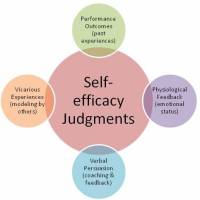At some point many of us will be involved in the training of other teachers, whether it is a formal part of our role or through involvement in a project, such as via the Maths Hubs, or as a mentor or even by just being an experienced member of a department. I have been reflecting on this recently as I have been lucky enough to deliver some training sessions to the PGCE students at two of our local universities.
The EEFs recent Guide to Effective Professional Development has been really useful in outlining the mechanisms that we need to focus on when delivering CPD. These mechanisms are worth repeating here:
Build knowledge
Managing cognitive load • Revisiting prior learning
Motivate staff
Setting and agreeing on goals • Presenting information from a credible source • Providing affirmation and reinforcement after progress
Develop teaching techniques
Instruction • Social support • Modelling • Monitoring and feedback •Rehearsal
Embed practice
Providing prompts and cues •Prompting action planning • Encouraging monitoring • Prompting context specific repetition
However, what has interested me particularly about delivering training to PGCE students recently however has been the practise of teaching the trainee teachers in the same way that we would teach the children in our classes.
As James Kendrick from Brighton University introduced my session he began with a countdown from 10 to get the room of 35 students to stop talking and pay attention, in just the same way as I would do for my classes in school. This is a really effective and simple behaviour management tool, and by the students seeing it being modelled in their sessions, this is normalising the technique for them and making them more confident about using it in their classrooms. I wanted to use mini whiteboards in my sessions, and at Brighton this is part of normal practise so they already had all of the equipment ready and were used to using them. As a visiting speaker, I made sure to make explicit my own rules for mini whiteboard use as I started my session – what to write on them, when to hold them up and how, thereby modelling to them how important it is to provide clear, unambiguous instructions on the behaviours that I expected to see. During the session I also modelled other techniques that I would use with my classes, for example asking them to think for a minute, then share their thoughts with the person next to them for a minute, before I took feedback. As they are right at the start of their teaching careers I needed to be mindful that the students were novices, and to be careful not to overload them, but I hope that by consistent and repetitive use of these techniques by both myself and the university staff they will get a head start on how they could work in the classroom.
In Kieran Mackle’s appearance on Craig Barton’s Tips for Teachers podcast he also mentions this: Tip no. 2 is “Treat the act of teacher development like teaching” and this really chimed with me given my experience above. Although we have a wealth of good research now on how to help our students learn, we often forget to put these same techniques into practise with our colleagues. Kieran uses the explain, model, practise cycle when he is working with primary teachers in his role. He will provide more support to new teachers and gradually fade this as they become more experienced in the same way that we might use faded worked examples with students.
His Tip no. 3 also links: “be explicit when modelling for colleagues”. I think that this becomes really powerful with teachers that are more experienced and are looking to tweak their practice. In The Teacher Gap, Allen and Sims talk about “Small actionable teaching assignments” and how making these small changes can have a big impact. At Durrington we have been using instructional coaching for a couple of years now, both with our ECTs and with our recently qualified teachers, and this year we are expanding this to use with all staff. Ambition Institute defines instructional coaching as a way of developing expertise through deliberate practice of a series of sub-goals to move towards a target. This is much the same way that in teaching we might break down a task into a series of small steps. I think that there are many benefits to using this technique with teacher improvement. We all know that giving generalised feedback to students such as “you need to revise more” is not very useful or actionable compared to “you need to make sure you use your flashcards to learn definitions for 15 minutes each day”. With teachers we have the added benefit of de-personalising feedback – much better to work on “using Pastor’s Perch to start students on their independent tasks” than being told “you need to settle the class better as they are taking too much”.
So next time you are involved in teaching teachers, at whatever level, do not forget the wealth of expertise that you already have in teaching students, and draw upon this to help get the best possible outcomes.
Deb is a maths teacher at Durrington High School. She is also a Maths Research Associate for Durrington Research School and Assistant Maths Hub Lead for Sussex Maths Hub.









